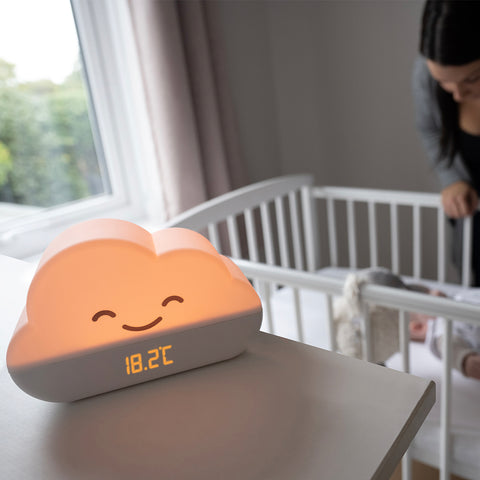Here at Sweet Dreamers we are on a mission to help all our babies, parents and caregivers get the sleep and rest they deserve. With World Sleep Day approaching on Friday 15th March, we think it’s a great opportunity to help you evaluate and refine your little one’s bedtime as they grow. It may be that you’ve fallen into some unwanted sleep practices that may be hindering your family’s sleep and if you’re thinking, this sounds like me, then this could be time for you to start afresh, a clean slate if you will, to getting back on track. According to thesleepfoundation.org:
Although babies begin experiencing four stages of sleep around three months, it is not until closer to 5-years-old that children’s “sleep architecture,” or their time spent in each sleep stage, begins to mirror that of adults
Baby sleep is a major driver in their cognitive development and with babies and preschool children experiencing so many sleep changes during this period, a regular reset can be just the ticket to cultivate good sleep habits for a restful night’s sleep!
With all this in mind, let’s dive into the actions we can take.
Routine
Consistency is key - the first and biggest influence in our little one’s sleep habits come from their routine. It’s the foundation we can build around and perfect throughout their childhoods. Your routine may be influenced by many factors including work hours, childcare or siblings and this all has a direct impact on how our children go to sleep. Use this reset to go back to basics with your bedtime routine.
When looking at babies/toddlers naps, we can start to build our routine around their wake windows. These windows of wakefulness represent the optimal duration of time that a baby can stay awake before needing to rest again. We look at these windows in relation to age, as when babies grow and for example can drink more milk, they will start to stay awake longer.

Although no formal sleep training is advised for young babies under 6 months, consistent bedtime steps such as bath time, baby massage, feed and then bedtime can help your little know what to expect each and every day and can provide a solid foundation for your routine.
Environment
Frequent evaluation of our babies sleep space is a great way of checking in on how our baby is sleeping. Curating their sleep space can depend on factors such as the seasons, temperature and where your little ones sleep space is within a household. Once we evaluate these factors we can start to look at whether we can make some changes to help our babies sleep more comfortably.
Some questions we could ask ourselves for example are, do we need to change the tog of our babies sleep bag to suit the rise/drop in seasonal temperature?
Could we invest in a black out blind to stop the early summer sunrise waking our baby too early?
Is my child’s bedroom next to a busy road and if so could white noise reduce the sound from cars going by, which could potentially be waking my baby up?
Once we have look at these environmental considerations, we can start to ensure our little ones have the optimal sleep environment to encourage healthy sleep habits.
This reset it also a good opportunity to ensure that you’re following safer sleep guidelines with your baby for both daytime naps and overnight sleeps. For more information on safer sleep practices check out www.thelullabytrust.org.uk
Best sleep practices
Adhering to some simple best practices can make bedtime smoother as your baby grows. Some children can find it hard to switch from playtime to bedtime and this can cause some pushback come bedtime.
Reducing surrounding stimulation from screens and playtime can help little ones to start to wind down for the evening. Where possible aim to reduce these kinds of activities around 45 mins – 1 hr before your bedtime routine starts as this will be a subtle cue that daytime is ending. Switching from toys to soothing music, tidying away toys or switching their activity to something calmer, can help your child to settle down.
Dimming your lights and closing curtains is also a great way of moving towards a cozier feel for little ones come bedtime.
Implementing these sleep changes will be the key in resetting your family bedtime. Children thrive when they are confident in their everyday schedule and boundaries – and it’s great for the whole family too! The familiarity can be something they come to rely on and be certain of, which will help them to flourish in all areas of their development.
And of course, remember that when life happens and we slip out of sync, when we are able, we can come straight back to these small strategies, reset and get back on track. Don’t be too disheartened if they don’t have an impact straight away, keep at it and you will get there in the end.













